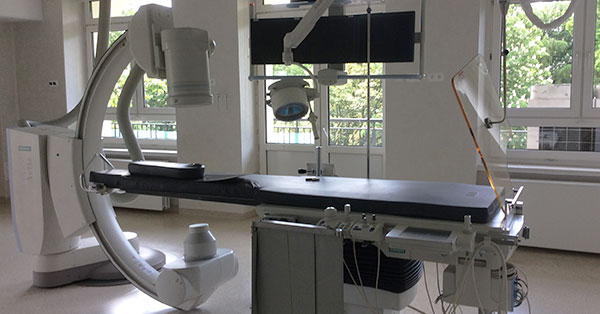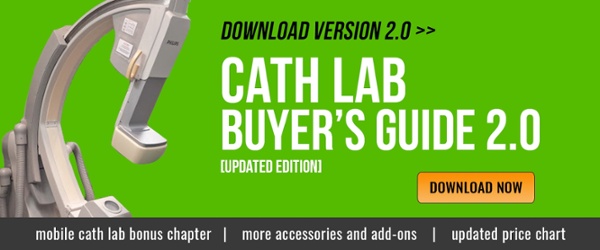
Searching for the perfect cath lab? It’s a lot more work than you thought, huh? Some people love the hunt, the chance to see what the imaging equipment jungle has to offer and to snare the system that best balances utility and economy for their site. Others: not so much. It can be incredibly difficult to hunt when you have no idea what prey you’re after.
Fortunately, we can help you narrow your search and get you stalking the best game for your imaging AND budgetary needs. We know you’ll have plenty of questions for us along the way, but the best place for cath lab hunters to start their journey is by answering the following questions for themselves.
How to Determine Your Ideal Cath Lab
- Do you currently have a cath lab in operation? If you don't, expect to have to do more remodeling and/or construction. Also, bear in mind that ceiling-mounted systems usually need more prep than floor-mounted.
- Who currently services your cath lab equipment? Knowing your options can improve your experience and save you money.
- Do you plan to expand or add more labs in the future? This is well worth keeping in mind as you build. A little future-forward thinking can put you ahead when the time for expansion comes.
- Do you perform/ intend to perform run-off procedures? This will influence decisions like how many monitors to have and what detector size to use.
- Are you looking for a single-plane or bi-plane system? A single-plane is most common, but if you currently have a biplane it will open up some options, particularly for things like neurovascular and EP work.
- What size Image intensifier or detector do you currently use? What size would you prefer? An 8” detector is suited mainly for cardiac work including EP. A 16” detector is good for angiography and large anatomy work (abdominal). 12” and 12”x16” detectors are versatile, and a strong fit for combination work.
- Do you plan to replace your hemodynamics system? What type of monitoring system do you currently have? Staying in the same manufacturer family can help ease the transition to a new lab for your staff.
- Do you need a new contrast media injector? Depending on its age and condition, your existing injector may or may not work with your incoming lab.
- Is the lab on-grade (floor-level, with no basement), or above-grade with an accessible floor underneath? What floor is the system on? This information will have ramifications on both your construction/remodeling and the logistics of rigging your new lab into your building.
- Is this an outpatient facility or is it located in a major hospital?
- What is your budget? After making sure you're getting the right system for the type of work you plan to do, this is one of the biggest factors in determining which system to purchase.
- What is your time frame for purchase and installation? Availability of systems can fluctuate over time. Knowing your time frame in advance can help you lock a system down for purchase.
The Takeaway
By answering these questions according to the needs of your site, you can determine which type of Cath Lab equipment you’ll want to devote your time to pursuing. A lot of valuable energy can be wasted focusing on units that won’t even meet your needs and a lot of money can be wasted on advanced features that a more basic practitioner will never use.
If the answers to these questions aren’t quite enough to hone your hunt, feel free to ask for more information from our expert cath hunters. When you’re finally ready to pull the trigger on a cath lab purchase, make sure your sights are trained on the right one!

Kenn Dextrom
Kenn Dextrom is the Director of Product Manager at Block Imaging. He aims to provide clear direction and careful planning for Interventional Cath Lab buyers and working with the Block Imaging product team to provide excellent solutions for our customers. Out of the office, he spends most of his time keeping up with his wife and their three energetic sons.





